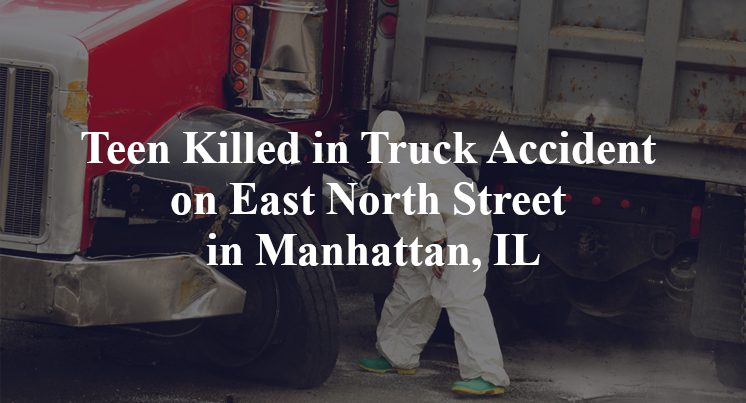Teen Killed in Truck Accident on East North Street in Manhattan, IL
Manhattan, IL — October 20, 2025, a 13-year-old boy was killed in a truck accident at about 5:30 p.m. in the 100 block of East North Street.
Authorities said a semi-truck struck a bicycle near the intersection with U.S. Route 52/South State Street.

The bicyclist, a 13-year-old boy, was pronounced dead at the scene of the crash, according to authorities.
No other injuries were reported.
Authorities have not released any additional information about the Will County crash at this time. The accident is still under investigation.
Commentary
When people hear that a 13-year-old boy was killed after a bicycle and a semi-truck collided, their first question is usually the right one: How does something like that happen? And unfortunately, the brief statements from authorities don’t give us much to go on. We know where the crash occurred, near an intersection of East North Street and Route 52, and when it happened. But the critical facts that would help explain why it happened are still missing.
For instance, it’s not clear whether the truck was turning, going straight, or even stopped at the time of the crash. It’s also not clear whether the boy was riding in the street, crossing at the intersection or on the sidewalk. Depending on those answers, very different legal questions arise.
What I can say from experience is that cases like this, where a commercial vehicle strikes a child, demand a much deeper investigation than what typically happens when authorities are stretched thin or quick to write it off as a “tragedy.” A 13-year-old boy is dead. That should prompt a full accounting of every contributing factor, not just a review of police reports.
A proper investigation would start by asking: What was the truck driver doing in the seconds before the crash? Was he distracted by his phone? That’s something cell phone records can show. Was the truck equipped with a dash cam or in-cab camera? Many are these days, and those devices often provide critical, objective footage.
There’s also the question of the truck’s engine control module, sometimes called its black box. That tool can reveal how fast the truck was going, whether the brakes were applied and what steering inputs the driver made. That’s often the best way to distinguish between a driver who reacted too late and one who never reacted at all.
But even if the truck driver made a mistake, we also have to ask: Should he have been behind the wheel in the first place? I’ve handled cases where trucking companies hired drivers with multiple prior firings or minimal training. One case involved a driver who “passed” a 20-minute driving test that somehow covered night driving, day driving, and bad weather all in one go. The jury didn’t buy it, and they were right not to.
Whether this crash was the result of driver distraction, poor visibility, lack of training or something else entirely, the key is to get answers from real evidence, not assumptions or public statements. Only then can the right people be held accountable.
Key Takeaways:
- Critical facts like the truck’s movement and the bicyclist’s location remain unknown; these must be clarified through investigation.
- Cell phone records, dash cam footage and ECM data can show what the driver was doing before impact.
- A child-vs-truck collision warrants scrutiny of not just the driver, but the company’s hiring and training policies.
- Legal accountability depends on facts, not assumptions; thorough evidence collection is essential.

“These are essential reads for anyone dealing with the aftermath of a truck wreck”– Attorney Cory Carlson